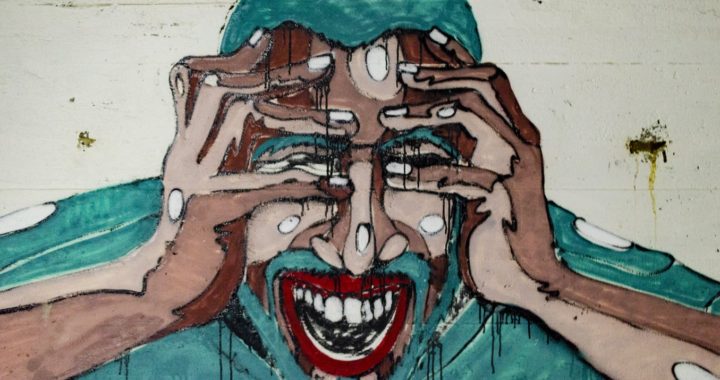No, I don’t want to contract COVID, but I also don’t want to live in fear. I hope not to get involved in a car accident either, but I continue to drive on the freeway every day. The automobile and driving, once considered a major breakthrough for the everyday convenience of humankind, are now a significant cause of death. Most of us take for granted that driving fatalities are a fact of life. An estimated 1.35 million people die in road accidents worldwide every year — 3,700 deaths a day. And millions of those who survive are left with permanent injuries. Most people have decided to measure the convenience against the risk and continue driving. An estimated 100 people die in car accidents every day just in the United States.
 Please make no mistake; I do not want to die. Life is a gift, so I try to balance caring for myself and others along with living. I hope to live many more years, but I recognize that much of life is simply beyond my control, as God is demonstrating with this terrible new virus, and as we see every day.
Please make no mistake; I do not want to die. Life is a gift, so I try to balance caring for myself and others along with living. I hope to live many more years, but I recognize that much of life is simply beyond my control, as God is demonstrating with this terrible new virus, and as we see every day.
—In 2017, a total of 2,813,503 deaths were reported
in the United States
Almost 40,000 people died from falling in the United States, and another 60,000 or more died from accidental poisoning. Every day we are bombarded with information telling us, “don’t eat this —eat that”, “do this — do that”. The fact is, we are all going to die, and we don’t know when or how.
There’s a popular notion that if we have strong faith, we should not suffer any undue fear in the face of death, but rather face it with calm, peace, and even gratitude, because we have nothing to fear from God or the afterlife. Christ has overcome death. Death sends us to heaven. So why be afraid?
I think living life in fear is worse than death. The potential consequences of fear on overall, physical, emotional, environmental, and spiritual health are well known. According to the American Journal of Managed Care, the potential effects of chronic fear include:
- Immune system dysfunction
- Endocrine system dysfunction
- Autonomic nervous system alterations
- Sleep/wake cycle disruption
- Eating disorders
- Alterations in the hypothalamus-pituitary-adrenal axis
The potential consequences of chronic fear for spiritual health:
- Bitterness/fear toward God or others
- Confusion/disgust with God or religion
- Loss of trust in God and/or clergy
- Waiting for God to fix it
- Despair related to the perceived loss of spirituality
With that said, God will do what he wants. I don’t pray for COVID-19. I do, however, pray for the people who live with the fear of what it might do, and I pray that it might bring them closer to God. For me, I don’t want to stay in my home for the rest of my life, not hug or touch someone, because I might die. For me, the cost is too much. I do not wish to live with that kind of fear. Some may find me selfish, but I want to live.
I understand this is a very different virus, and it is incredibly potent. I am neither a doctor nor a scientist. But I am a Psychologist who believes we must count the other costs. There is more to life than just not getting sick and not dying. People have lost their jobs, and suicide has skyrocketed. We must consider these losses when deciding on how to move forward.
July 30, 2020, update
CDC Director Compares Rate of Suicides to COVID-19 Deaths
Center for Disease Control Director Robert Redfield said in a Buck Institute webinar that suicides a
Some Background
According to the Centers for Disease Control (CDC), in 2009, a novel H1N1 influenza (flu) virus emerged to cause the first flu pandemic in 40 years. The 2009 H1N1 pandemic was estimated to be associated with 151,700 to 575,400 deaths worldwide during the first year it circulated. Although the CDC and its many partners have made great strides in the fields of influenza surveillance, prevention, and treatment since 2009, the H1N1 virus has continued to circulate seasonally to this day.
The (H1N1)pdm09 virus was very different from H1N1 viruses that were circulating at the time of the pandemic. Few young people had any existing immunity (as detected by antibody response) to the (H1N1)pdm09 virus, but nearly one-third of people over 60 years old had antibodies against this virus, likely from exposure to an older H1N1 virus earlier in their lives. Since the (H1N1)pdm09 virus was very different from circulating H1N1 viruses, vaccination with seasonal flu vaccines offered little cross-protection against (H1N1)pdm09 virus infection. While a monovalent (H1N1)pdm09 vaccine was produced, it was not available in large quantities until late November—after the peak of illness during the second wave had come and gone in the United States. From April 12, 2009 to April 10, 2010, CDC estimated there were 60.8 million cases (range: 43.3-89.3 million), 274,304 hospitalizations (range: 195,086-402,719), and 12,469 deaths (range: 8868-18,306) in the United States due to the (H1N1)pdm09 virus. Read more from the CDC

